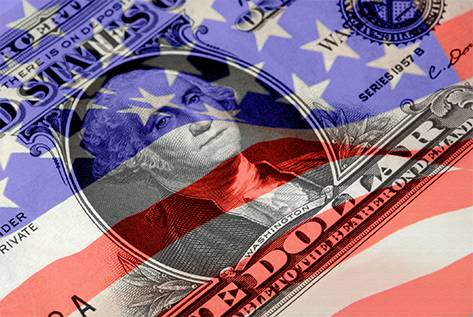The US Dollar Index held near a three-month high on Monday against a basket of major currencies, as investors awaited key economic data this week that is expected to offer only limited insight into the health of the US economy, while reinforcing the Federal Reserve’s cautious stance on monetary policy.
The Fed cut interest rates last week by 25 basis points, as widely expected, but Chair Jerome Powell warned that the move could be the final cut this year, citing risks in proceeding further without a clearer economic picture.
If not for the ongoing US government shutdown, this week’s releases—including the nonfarm payrolls report—could have helped shape that picture. With official data delayed, investors will instead rely on private-sector employment figures from ADP and ISM manufacturing data, though both are seen having only a muted impact on markets.
Several regional Fed presidents voiced discomfort on Friday with the latest easing move, while market bets now point to roughly a 68% chance of another rate cut in December—down sharply from before last week’s meeting.
The Japanese yen fell to 154.1 per dollar, near an eight-and-a-half-month low, weighed down by widening interest rate differentials between Japan and the US. The euro slipped 0.16% to 1.1513, its weakest level in three months, while the British pound dropped 0.3% to 1.3133.
The US Dollar Index, which tracks the greenback against six major peers, rose 0.16% to 99.89—its highest since August 1—after trading within a tight 96–100 range over the past six months.
Lee Hardman, senior currency analyst at MUFG Bank, said, “The focus now is whether the index can break out of this range and whether the current rally is sustainable,” adding that the repricing of more hawkish Fed expectations remains the key driver of dollar strength.
Both the yen and the pound face unique pressures. Although Bank of Japan Governor Kazuo Ueda delivered his strongest signal yet last week of a possible rate hike in December, markets reacted cautiously given the bank’s slow-moving stance, particularly as the Fed turns more hawkish.
These dynamics have intensified pressure on the yen, prompting Japanese authorities to issue verbal interventions to stem the slide. The yen is now approaching levels where the government previously stepped in to support the currency in 2022 and 2024.
Hardman added, “The yen may start to find some support as markets near potential intervention levels, though that alone won’t be enough to change the broader trend.”
The yen also hovered near a record low against the euro, last trading around 177.4 per euro.
Meanwhile, the pound remained weak as expectations rose for another Bank of England rate cut this year following weaker-than-expected inflation data last month. The central bank meets this week, with some analysts anticipating a 25-basis-point cut, though market pricing suggests only a one-in-three chance.
Elsewhere, the Australian dollar edged up 0.1% to 0.6554, supported by expectations that the Reserve Bank of Australia will hold rates steady on Tuesday after a stronger core inflation reading. The US dollar also gained 0.34% against the Swiss franc to 0.8072—its highest since mid-August.


